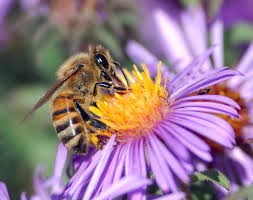Global Decline of Insects a ‘Death by a Thousand Cuts’
While there may be 10 quintillion of them across the globe, scientists say insects could be extinct sooner rather than later — and humans are to blame.
(CN) — At any given moment, 10 quintillion insects are buzzing, crawling and inching along in the world. Some pollinate flowers and plants, others break down carrion and many more serve as bellwethers to the end of the world as we know it.
The global decline of insects is a well-documented phenomenon, but at the same time much is still unknown about what will happen to the earth when millions of insects continue to die each year.
A batch of papers published Monday, Jan. 11, from 56 researchers detail the staggering effects of climate change on insect populations throughout the world.
Researchers do not take a light tone with their findings and claim humans have kicked off a sixth mass extinction event due to the way we live and that will have devastating consequences for all living things, including insects.
Most of that is owed to the industrialization of agriculture in the second half of the 20th century, according to American botanist Peter Raven and University of Connecticut entomologist David Wagner.
Roughly 11% of the planet’s land is used for crops and 30% for grazing, according to the study authors.
“Over the entire agricultural area of the world, species are being lost rapidly and continuously,” write the study authors. “We have been slow to recognize that insects, too, are declining rapidly.”
Pollinators, such as bees, make up the strong glue that holds together our food webs and yet their decline is relegated to the niche sections of news sites, according to a separate study.
“Media attention to pollinator declines is required to raise public awareness of the problem and to pressure governing institutions to prioritize and pass effective policies for addressing the crisis,” writes political science professor Scott Althaus from the University of Illinois.
The scientists report that out of 10 million news stories published from 2007 to 2019, a little over 1% take up global warming and just 0.02% mentioned the issue of pollinators. And even less, about 0.07% were about bee declines.
They note that in 2007, then-Senator Barbara Boxer of California introduced legislation to protect pollinators, which then led to “beepocalypse” headlines, but that was only effective to generate more attention to the issue in the United States.
Another group of pollinators, like moths, are on the decline in Costa Rica, while in other parts of the world, like in Ecuador and Arizona, there have only been slight declines according to the authors of another study led by Wagner.
Moth loss will contribute to ecological erosion and “reduced ecosystem functioning” according to the study authors. The decline of caterpillars will be felt most by some bats, birds and even grizzly bears in Yellowstone National Park, where as much as one-third of their annual calorie intake could come from a single moth species.
“Depletions of moths will have effects that will cascade, upward and downward, triggering further losses of interactions and species,” the study authors write.
One of the most well-documented declines in the insect world are butterflies, which have seen their own version of an apocalypse as humans shrink their habitats with new development and as more pollution seeps into the air.
Butterfly ecologist Dr. Martin Warren and colleagues charted the decline of butterflies across Europe over the last several decades.
They found that in the Netherlands, 20% of butterfly species have gone extinct and starting in 1990 the overall numbers of the insects has declined by 50%. In the United Kingdom, 8% of butterfly species have gone extinct while their overall numbers have declined by 50% since 1976.
Belgium reported a 29% butterfly extinction rate, and between 1992 and 2007 saw a 30% decline in their overall butterfly population, according to the study authors.
The data shows that the greater declines were in Central and mid-Western Europe, with the lesser declines further north and around the Mediterranean. This means some butterflies, like the thermophilus species, are spreading out further, while other species are forced to head to cooler climates for the first time.
Rising temperatures may not pose a direct impact on some parts of the world, but there are the indirect consequences brought by climate change, such as hurricanes.
The Luquillo Experimental Forest in northeastern Puerto Rico covers roughly 27,000 acres across five different biomes and previous theories said that walking stick bugs and canopy insects were impacted by the rising heat brought on by climate change.
But Louisiana State University entomology professor Timothy Schowalter and colleagues find that more frequent and intense hurricanes create greater impacts on the insect’s ecosystems than the short-term increase in temperature does.
For example, Hurricane Maria killed over 3,000 Puerto Ricans in 2017 and devastated the experimental forest’s tree canopies. This in turn showed researchers the need to better measure the long-term populations of insects to better understand how they may endure on a changing planet.
Still, all researchers who published their findings in the series of papers share similar conclusions: humans are in the middle of a biodiversity crisis.
“We cannot and must not simply just keep scooping as much money as possible into our own national pockets, so to speak, until nature, our planet, has been exhausted, extinguished,” write Revan and Wagner. “Social justice is not an option, but a necessity, if we wish to forge a sustainable future for our children and grandchildren.”
________________________________________________________________________________










